Sony Bravia KDL-40ZX1 40in LCD TV Review
Sony Bravia KDL-40ZX1 40in LCD TV
Sony goes ultra-thin and wireless with this LED-lit 40in LCD TV.
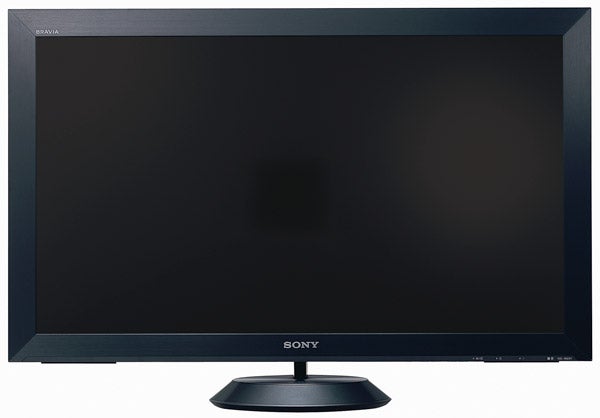
Verdict
Key Specifications
- Review Price: £3208.00
Any hopes I might have had about starting this week gently, with a nice simple TV, were summarily dashed over the weekend as the technical difficulties I’d been having with Sony’s truly groundbreaking KDL-40ZX1 TV were sorted out. For now I no longer had any excuse for not wrestling with all of its fancy features at the earliest opportunity – i.e. today. Sigh.
Actually, to be honest, while reviewing the 40ZX1 has certainly been unusually time-consuming, the process hasn’t been completely without its pleasures. It’s certainly been fun, for instance, to see the look of wonderment on the faces of any friends, family and colleagues who happened to wander in while the TV was working. Not necessarily because of the set’s picture quality, but rather because the TV’s 40in frame sits on a body that’s for the most part just 9.9mm thick.
Yes, I really did say 9.9mm, not 9.9cm. Thanks to edge-based LED lighting technology (more on this later), the 40ZX1 is comfortably the thinnest large-screen TV the UK has ever seen. And the impact of its extreme slenderness really can’t be overstated, wowing as it does everyone from gadget hounds to my dear old 86-year-old gran. 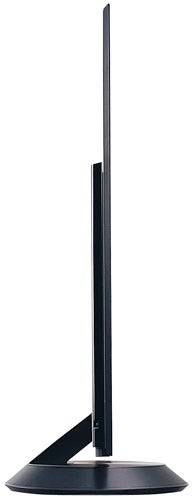
Truly awesome though the 40ZX1 looks, there’s a voice inside me that wants to trivialize this slenderness, no matter how extreme. For when you really get down to it, even the 40ZX1 is only a few cm slimmer than a ‘normal’ flat TV. Also, of course, the impact of its slimness is inevitably not going to be so profound if you wall-hang the TV, thus denying people the chance to see all around it. And finally, while we’ve seen no evidence yet to suggest that going ultra-thin can damage image quality, we also haven’t seen any evidence to suggest that it actually improves picture quality. And when all’s said and done, for me – boring though it doubtless makes me sound – a TV ultimately has to be all about the picture quality.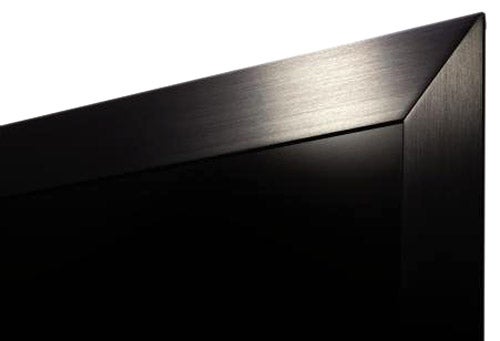
Getting back to the 40ZX1’s design, it’s important to point out that its ultra-slim body is built from rather gorgeous black brushed metal. This quickly puts to bed early concerns I’d had regarding how robust such a slim TV might be.
Not surprisingly, the 40ZX1’s remarkable slimness means that the TV does not carry a built-in tuner. In fact, it doesn’t have much built into it at all; just a solitary HDMI ‘monitor’ input, a slot for attaching an optional, speaker-bearing stand, and a two-pin power input (there wouldn’t have been enough room for a typical three-pin ‘kettle lead’ connection, after all!).
As you’d anticipate, this lack of a built-in tuner and shortage of sockets is compensated for by the inclusion with the screen of an external multimedia box. This box provides three HDMI inputs to accompany the one on the screen, with other highlights of an optical digital audio output, a D-Sub PC port, a USB port, a component video input, and two IR Blaster ports for passing on control signals to secondary gear you may want to stick in a cupboard somewhere. All good news, of course. But what makes the media receiver really special is not its inputs, but the fact that it doesn’t carry an output for connecting it to the screen…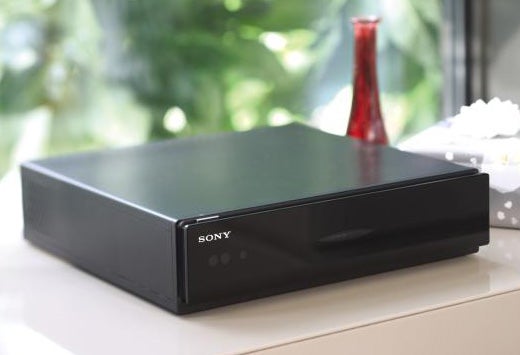
This is because, rather niftily, the screen and receiver incorporate the UK’s first wireless HD transmission system. This system uses a proprietary 5.0GHz ‘broadcasting’ system to carry all the image and sound information wirelessly from the receiver to the screen, even when that image content is data-heavy HD fare.
Given that cabling is regularly stated to be the most annoying thing about trying to set up a home cinema system, the 40ZX1’s groundbreaking wireless talents could win it as many fans as its slimness. It’s just a pity nobody’s figured out how to power the screen wirelessly yet as well!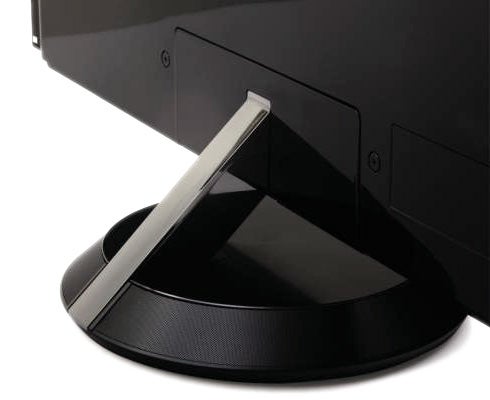 (centre)”’The optional SS-TBL700 stand/speaker”’(/centre)
(centre)”’The optional SS-TBL700 stand/speaker”’(/centre)
The 40ZX1’s feature count doesn’t end with its wireless HD and slimness, either. Particularly noteworthy is the set’s MotionFlow 100Hz processing, Sony’s proprietary engine for adding extra frames of image data to make movement in the picture look both sharper and more fluid.
Also handy are a game mode; a couple of different film modes that tweak the progressive scanning to suit film sources; separate video and photo modes; standard and MPEG noise reduction routines; an optional black corrector; an optional contrast booster; plus gamma, clear white, and white balance adjustments. A full colour management system would have been the icing on the cake, but I guess I can let this ride in the face of all the 40ZX1’s innovations.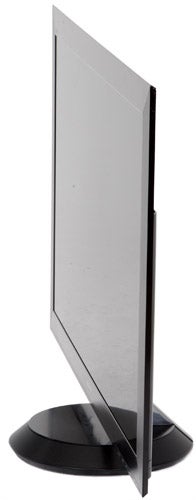
Obviously the two big things I need to pay special attention to as I start reviewing the 40ZX1 are whether its thinness and/or wireless media box connectivity damage its performance in any way.
Starting with the wireless distribution system, the answer appears to be that it does its thing without any obvious problems. Admittedly I initially had some issues with getting the screen to talk to the receiver, but this was because I’d been sent the wrong receiver (the screen and receiver have to be ‘formally introduced’ to each other before they’ll communicate), not because of any limitations with the communications system.
Watching a 1080p/24 Blu-ray – ”Iron Man” – reveals pictures on the TV that seem to lose not one pixel of image data, and which seem to suffer with no extra noise caused by the HD broadcasting process. Walking between the screen and the media box doesn’t cause the signal to break up either, and it’s worth noting too that there doesn’t appear to be any significant delay between the media receiver obtaining a source and it being wirelessly transmitted the screen. This latter point will be a relief to console gamers.
The only problem revealed at this stage is the fact that the picture you’re watching isn’t actually 1080p/24. This is because the wireless system apparently handles 1080i – though curiously when the receiver shook hands with my Blu-ray player, it chose an output from the player of 1080p/60. If you want the screen to receive 1080p/24, you’ll have to use the monitor HDMI input built into the screen itself.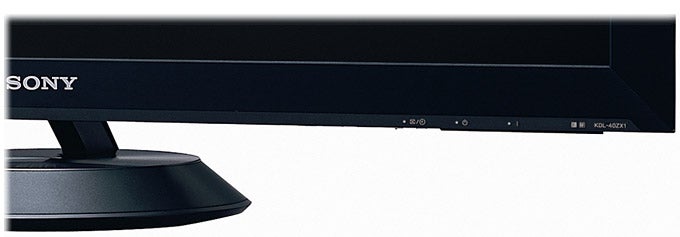
Turning to the issue of whether the TV’s slimness affects its performance is less straightforward. And I guess the simple answer is that actually, yes it does.
The key to why this is so lies in the LED lighting the TV employs. For unlike standard LED TV we’ve recently tested, the 40ZX1’s LED backlight array doesn’t lie directly behind the screen, but rather lies around its edges – a development that’s responsible for the TV’s ground-breaking slimness.
These edge-mounted LEDs throw light across the screen using reflective sheets, with angled sections within these sheets steering the light forward and out of the screen. Unfortunately, though, this approach – for now, at any rate – stops the 40ZX1 from being able to employ that key LED trick of local dimming, whereby the multiple LED arrays that make up an LED TV screen can be controlled individually.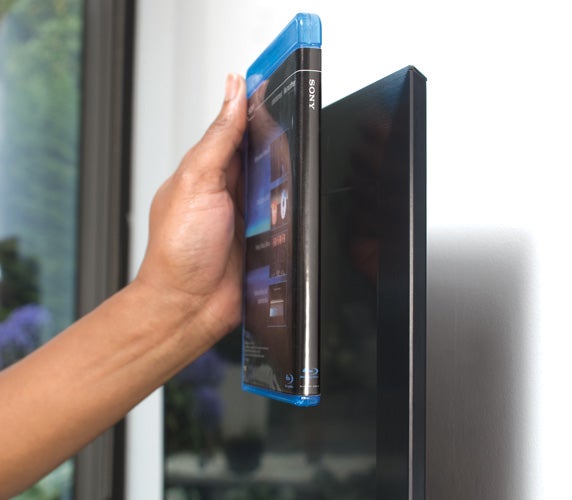
The lack of local dimming inevitably damages the 40ZX1’s contrast versus the terrific black level efforts of Sony’s X4500 and Philips’ 42PFL9803H LED models, since it can’t deliver such extremes of bright and dark within the same single frame.
As a result, really dark scenes in ”Iron Man”, such as those in the desert cave where Tony Stark is held hostage, definitely suffer with more greyness than you get with the X4500 ‘true’ LED models. 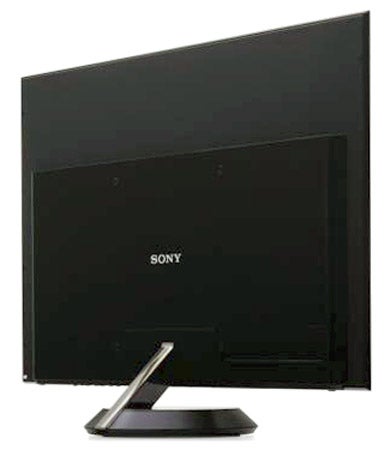
That said, the 40ZX1’s black levels still look deeper than those witnessed on all but the very best standard LCD TVs, and even give one or two of the world’s weaker plasmas a run for their money. They’re stable, too, and don’t suffer with the slight ‘blooming’ issue witnessed on some LED sets, most notably Samsung’s 956 series.
The 40ZX1’s colours aren’t quite as intense as those of the X4500 range, presumably on account of the set not having RGB LED dimming. But again that’s not to say that colours aren’t still very likeable, with solid saturation levels, good blend subtlety from the Full HD resolution of the screen, and mostly impressively natural tones. Only a tiny undercurrent of green during some very dark sequences causes any concern – provided, at least, that you don’t leave the TV on the truly dismal Vivid image preset, and opt for Cinema or a carefully calibrated concoction of your own instead.
Compared with the majority of LCD (as opposed to standard LED) TVs, the 40ZX1 nearly delivers a Recommended standard of performance. But unfortunately it has a pretty troublesome Achilles’ heel: motion blur.
Even with the MotionFlow system active on its Standard setting there’s clear evidence of smearing and resolution loss over fast moving objects in the picture, especially – though certainly not exclusively – when watching standard definition. As well as being distracting in itself, this dents the image’s otherwise excellent HD clarity. Turning MotionFlow to High considerably reduces the motion blurring effect, but also generates the occasional processing twitch, especially during fast camera pans. 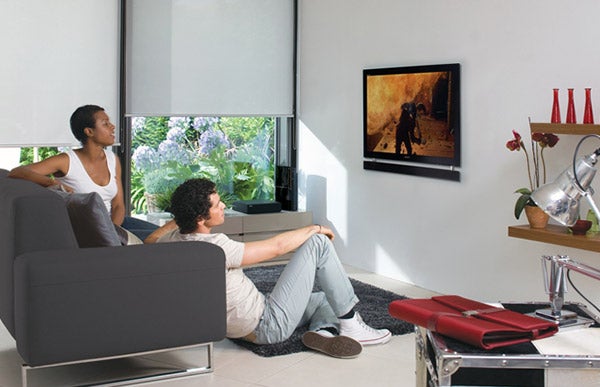 (centre)”’In use with the optional SS-WAL700 speaker bar”’(/centre)
(centre)”’In use with the optional SS-WAL700 speaker bar”’(/centre)
Other issues with the TV include a tendency for standard def skin tones to look slightly waxy and standard def pictures generally to look slightly soft – though thankfully also very noiseless. There are also minor traces of light bleed around the screen’s extreme edges during very dark scenes and a pretty limited viewing angle before the picture starts to lose contrast badly.
I’m obliged to add here that our test sample also developed a problem whereby a central portion of the screen looked slightly brighter than the rest of the picture during dark scenes. But this wasn’t there when we first received the set, so I presume it’s just a technical issue with our specific sample.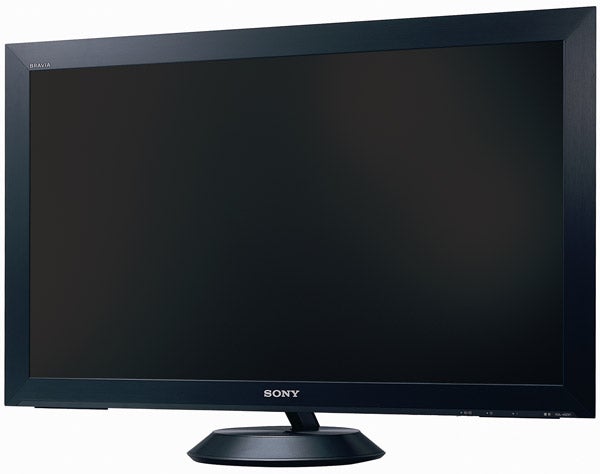
The 40ZX1’s sound, as I mentioned right at the start, comes courtesy of an optional tabletop stand (SS-TBL700). In fact, the speaker is built around the circular base of the stand, a very tidy solution that helps create an impressively wide soundstage. What’s more, the fact that the speakers are angled upwards ensures that the audio sounds fixed on the screen rather than dislocated from it. Also, volume levels can go high without distortion and bass levels are pretty punchy, leaving as the only negative a tendency for trebles to become overpowered during action scenes. A slim speaker bar (SS-WAL700) for wall hanging is also available as an option.
”’Verdict”’
The 40ZX1 is yet another genuine ‘statement’ product from Sony, confidently delivering not one but two seriously eye-catching world firsts while still producing a mostly credible level of performance. That said, its motion handling flaws are disappointing, and since its pictures aren’t as good as those of Sony’s X4500 range, I also can’t help but think that its price looks high for a 40in TV. Unless, of course, you happen to be one of those tech-poseur types who values show-off features and design ahead of raw picture quality!
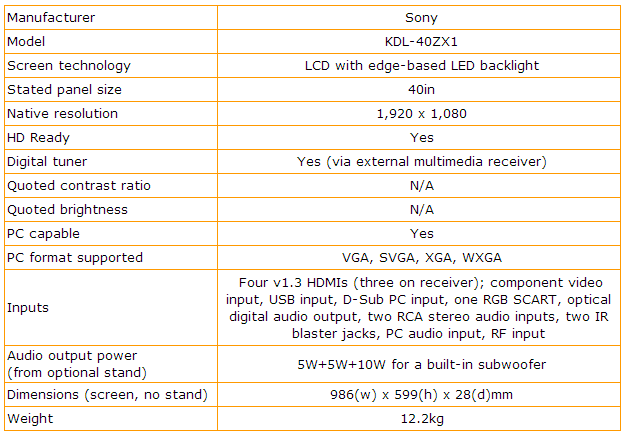
How we test televisions
We test every TV we review thoroughly over an extended period of time. We use industry standard tests to compare features properly. We’ll always tell you what we find. We never, ever, accept money to review a product.
Trusted Score
Score in detail
-
Features 9
-
Value 7
-
Image Quality 8
-
Design 9
-
Sound Quality 8
Features
| Size (Inch) | 40in |
| Display Type | LCD |

